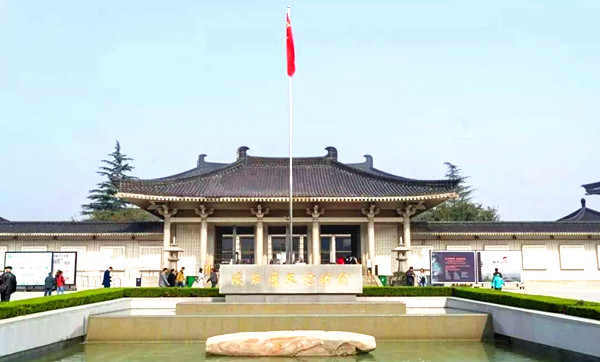 Shaanxi History Museum
Shaanxi History Museum
Shaanxi province, one of the important areas where Chinese nation lived and multiplied, is also one of the places of the birth and development of Chinese civilization. It was the capital of 13 most glorious dynasties and so on. The rich cultural legacy and profound cultural heritage formed the Shaanxi unique historical cultural features.
Shaanxi History Museum, located in the northwest of the Wild Goose Pagoda, was built in 1983 and was open on June 20, 1991. It is the first large-scale modern national museum of China, which marks that China museum career has entered into a new development mileage.
Chinese Name: 陕西历史博物馆
Location: at 91 Xiaozhai East Road, Xi’an.
Tel: +86 29-85253806
Opening Time (Tues. - Sun.): 9:00 a.m.-17:30 p.m. 15th Nov. - 14th March
8:30 a.m.-18:00 p.m. (16:30 p.m. stop offering tickets) 15th Mar. - 14th Nov.
Ticket: Free
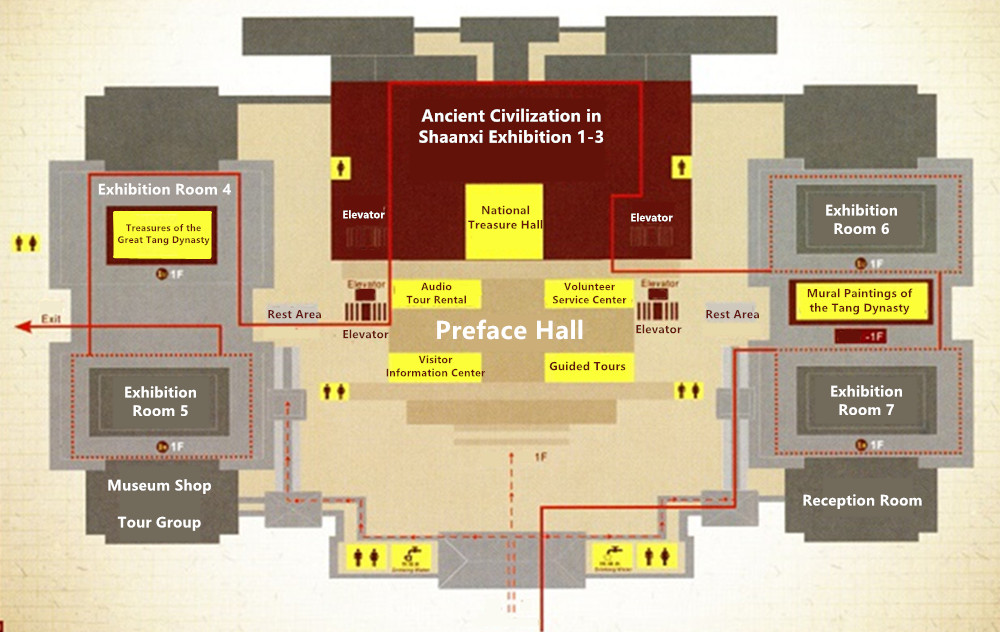 Route Map of the Shaanxi History Museum
Route Map of the Shaanxi History Museum
Note: In order to ensure the safety of the audience and the quality of the visit, the public must reserve free tickets in advance
Transportation:
By Bus
Bus No. 5, 19, 24, 30, 34, 271, 400, 401, 521, 527, or You 8 (610) and get off at Cuihua Lu (Cuihua Road) bus stop.
By Metro
Metro Line 2 or Line 3 to Xiaozhai Station, and exit from Exit D. Then, walk east along East Xiaozhai Road around 800 meters (0.5 miles) to get there.
Metro Line 3 to Dayanta Station. And then walk west along East Xiaozhai Road for about 800 meters to reach.
Layout and Construction
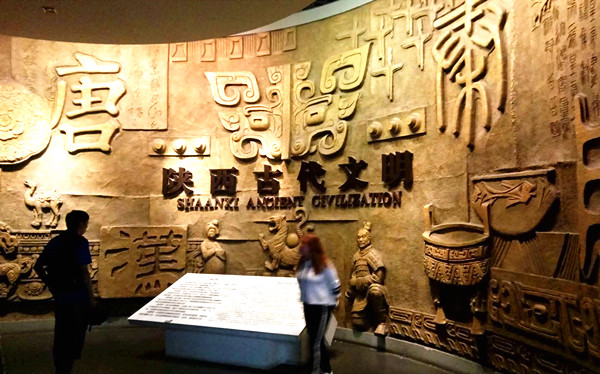 Exhibition Hall
Exhibition Hall
The main buildings of Shaanxi History Museum include the Preface Hall, basic exhibition halls, special exhibition halls, and temporal exhibition Halls. The basic halls are divided into three exhibition halls with 2,000 cultural relics to display the history of ancient times in chronological order.
The great designer used traditional palace construction of Tang Dynasty for reference, while designing the buildings in Shaanxi History Museum. The complex architectures, adopting symmetry axis layout with obvious principal and subordinate buildings in order and four worship halls around, show the charming presence of prosperous Tang Dynasty. The predominant colors of the buildings are white, grey and black which create an atmosphere of solemnity.
Permanent Exhibition
The First Exhibition
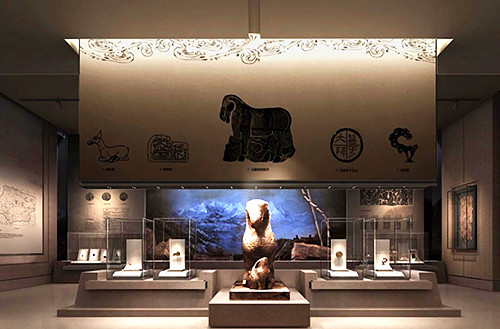 The Second Exhibition
The Second Exhibition
It shows the history of Prehistoric Times (1,150,000 years ago - 21st Century BC), Western Zhou (1046 - 771 BC) and Qin Dynasty (221 BC-206 BC). Different original cultures are mainly shown in prehistoric times. In the Western Zhou and Qin Dynasty areas, the origin and arising of these two dynasties are covered.
The Second Exhibition
It shows the history from the Han Dynasty to the Northern and Southern Dynasties (386-589). In the Han Dynasty, grand architecture and the cultural exchange with other countries are interesting. Everlasting wars and cultural integration are the main themes of the North and Southern Dynasties.
The Third Exhibition
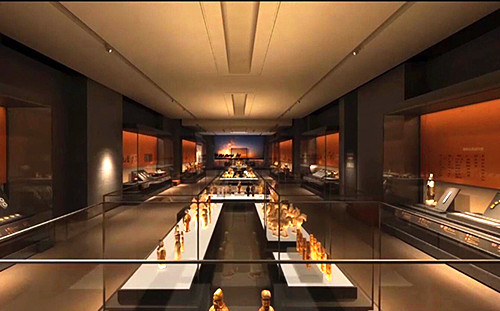 The Third Exhibition
The Third Exhibition
It covers the history of the Tang Dynasty and later years. The Tang Dynasty was the heyday of China and Shaanxi Province; so many different kinds of relics covering almost all aspects are shown in this section. You can see splendid gold and silver articles, tri-color glazed pottery, and articles related to the Silk Road in this hall. After the Tang Dynasty, it was still an important place, although Xi'an lost its position as the capital city of China. There are many relics that show its continuing importance.
Topic Exhibition
Treasures of the Great Tang Dynasty
On October 5, 1970, two large urns, containing more than one thousand splendid gold, silver, jade, crystal, agate and glass wares, were unearthed at Hejiacun village in the southern suburbs of Xi'an city, the place where the Xinghua Quarter of Chang'an city of the Tang dynasty was located.
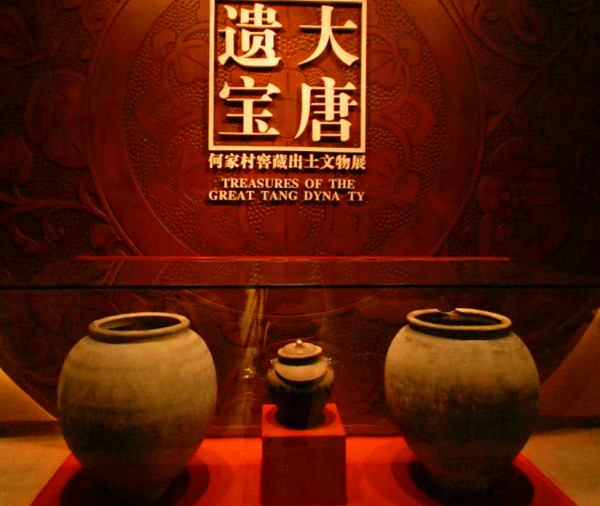 Treasures of the Great Tang Dynasty
Treasures of the Great Tang Dynasty
These wares won everybody's admiration for the perfect integration of the bearing of the Great Tang dynasty and the exotic style. The Chinese archaeologists addressed this discovery as a rival of "Treasures of Oxus River", the famous archaeological discovery known by the west, as well as one of the Significant Archaeological Discoveries of China during the Twentieth Century.
Since Hejiacun treasures were discovered, only a small part of them were displayed in this museum or were invited to join the overseas tour exhibitions. Most of them were kept in the storehouses. When these treasures were buried? Who was the owner? Why they were buried? This exhibition, the most complete one, aims to invite you to explore these riddles, and to share the rare legacy of the great Tang dynasty.
Mural Paintings of the Tang Dynasty
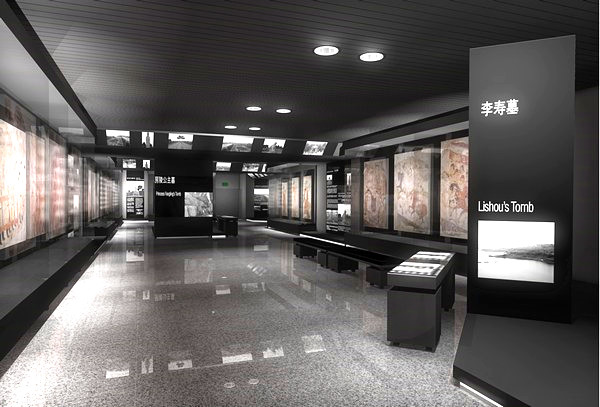 Mural Paintings of the Tang Dynasty
Mural Paintings of the Tang Dynasty
The paintings of the Tang Dynasty represented the highest level of artistic skills which linked the preceding art and the following art. However, few paintings have survived due to the passing of time.
Since the 1950s, many paintings of landscapes, buildings, utensils people, animals, and plants have been found in the Tang Tombs, depicting the reality of life during the Tang Dynasty. These paintings provide a panoramic view for understanding the rituals of the imperial court as well as the architectural style of the period. Moreover, the customs of the people and their characteristics of dress and insights to their entertainment activities are also shown.
The exhibits here totals nearly one hundred pieces, they were selected from the museum's collection which were unearthed from the imperial tombs and the tombs of nobles. Each of them is representative of the splendid social life of the great Tang Dynasty.
Travel Tips
The free open time is from every Tuesday to Sunday, and it is closed all day on Mondays for refurbishment (except national legal holidays).
The museum implements the principle of “no charge but not no tickets”
a. 6,000 tickets are provided everyday with its limited quantity and time (3,000 tickets in the morning and 3,000 tickets in the afternoon) until they are all distributed.
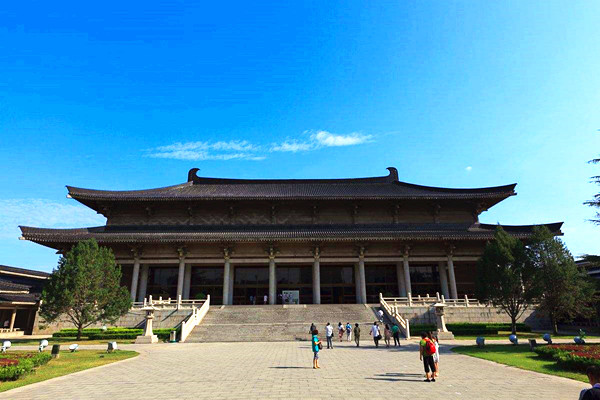 Shaanxi History Museum
Shaanxi History Museum
b. Individual visitors (with ID card or effective certificate) are now required to make reservations on the official website or WeChat official account "Shaanxi History Museum Ticketing System" to ensure entry to the museum. Online reservations are available up to seven days in advance, and the tickets are valid only during the reservation period.
c. For group visits, the tour guide should bring his/her ID card and unit introduction letter to the Ticketing Center of Shaanxi History Museum in advance to consult and book tickets.
d. The elderly, disabled people and elementary school students must be accompanied by family members or their guardians to get the tickets from the exclusive window; active duty soldiers have a priority to get the tickets.
e. Those with untidy clothes and bad manners and those carrying dangerous goods are not allowed to enter into the Museum.
There are free deposit boxes in the museum, please keep the valuables by yourself.
Visiting vehicles must park in the specified position of the parking lot orderly, please do not park in the no-parking area.
In the exhibition hall, flash photographing, eating and drinking, noise and frolic are prohibited, doing something unrelated to visit is banned; behaviors such as spitting, smoking and throwing away litter are also forbidden.
Please take good care of the cultural relics, exhibition facilities, other public service facilities, flowers, plants, green space and so on; if you damage them, you should be liable for the damage or bear corresponding legal responsibility.























